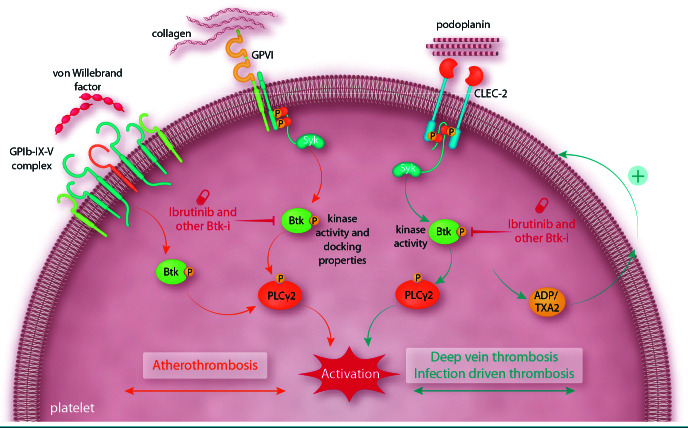Figure 1.
Btk inhibition downstream of platelet GPVI and CLEC-2 as a new strategy to prevent deep vein thrombosis, thrombo-inflammation and atherothrombosis. This schematic and simplified representation highlights the role of Btk in the intracellular signaling pathways evoked by platelet receptors such as GPVI, GPIb-IX-V and CLEC-2. Low doses of Btk inhibitors, compared to the relatively high doses currently used for the treatment of B-cell malignancies, strongly prevent CLEC-2- evoked platelet activation and may protect against deep vein thrombosis and infection-driven thrombosis. The Btk-dependent positive feedback loop involving adenosine diphosphate and thromboxane A2 in human platelets stimulated by CLEC-2 triggering is shown. Moreover, inhibiting Btk downstream of GPVI (strongly triggered by plaque collagen), and to a lesser extent GPIb, may protect against atherothrombosis. Low-dose irreversible inhibitors may be more effective on platelets that lack de novo synthesis of Btk than on nucleated cells such as B cells. It will, however, be important to determine the appropriate dose of Btk inhibitors to use, as some individuals are more sensitive than others.14 GP: glycoprotein; CLEC-2: C-type lectin-like receptor; Btk-i: Bruton tyrosine kinase inhibitor; Btk: Bruton tyrosine kinase; PLCγ2: phospholipase Cγ2; ADP: adenosine diphosphate; TXA2: thromboxane A2.

